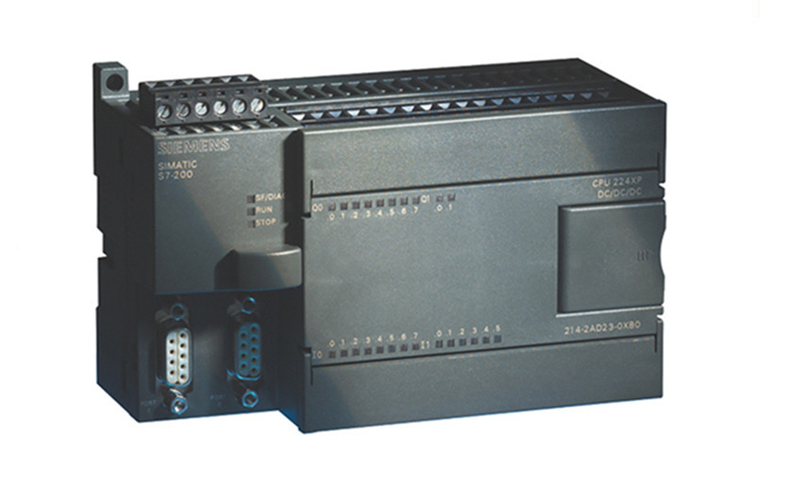
A Programmable Logic Controller (PLC) is an electronic device widely used in industrial automation. It controls machinery by receiving input signals, performing logical operations, and outputting control signals. The working principle of a PLC is primarily based on processing input and output signals, logical operations, and program control. Below, I will explain in detail the working principle of PLC:
1. Basic Components of PLC
A PLC mainly consists of the following key components:
- CPU (Central Processing Unit): The brain of the PLC, responsible for executing program instructions, processing data, and performing logical judgments.
- Memory: Includes program memory and data memory. Program memory stores the control programs written by the user, and data memory stores the data generated during system operation.
- Input/Output Modules: The input module is responsible for receiving signals from external devices (such as sensors, buttons, etc.), while the output module transmits control signals to external devices (such as motors, solenoid valves, etc.) to control industrial processes.
- Power Supply: Provides stable electrical power for the PLC and its connected external devices.
These components work together to form the hardware foundation of the PLC, enabling it to perform complex automation control.
2. Overview of the Working Principle
The working process of a PLC typically follows a cyclic scanning process, which includes three stages: input scanning, program execution, and output refresh:
- Input Scanning: In this stage, the PLC reads the status of all input modules and stores them in the input image register. This process is performed in parallel, meaning that the status of all input points is read simultaneously.
- Program Execution: After input scanning, the PLC performs logical operations and data processing according to the control program written by the user. The program is usually executed in a loop, continuously repeating until it encounters a stop instruction or an external interrupt.
- Output Refresh: After the program execution is completed, the PLC updates the output image register's status to the output modules, controlling the actions of external devices. This process also occurs in parallel, meaning that the status of all output points is updated simultaneously.
Through this cyclic process, PLC can achieve real-time control and monitoring of industrial processes.
3. Programming Languages
To facilitate user programming and debugging, PLC supports various programming languages, the most commonly used ones include:
- Ladder Diagram (LD): Mimics the wiring diagram of traditional relay control systems. It is intuitive and easy to understand, making it a common programming language for beginners and on-site engineers.
- Function Block Diagram (FBD): Breaks down complex control logic into a series of function blocks, and connects these blocks to achieve control functions.
- Instruction List (IL): Similar to assembly language, it describes control logic through a series of instructions. This is suitable for advanced users who need precise control over program execution.
4. Practical Application Example
PLC is widely applied in industrial automation. Here's a simple application case:
Suppose there is an automated production line that requires controlling the start/stop sequence of multiple motors and solenoid valves. By programming the PLC, precise control of these devices can be achieved. For example, when a sensor on the production line detects that materials are in position, the PLC receives an input signal and, based on the preset program logic, sends corresponding output signals to start the motor and open the solenoid valve, thereby completing the material transport and processing.
5. Maintenance and Troubleshooting
To ensure the stable operation of the PLC system, regular maintenance and troubleshooting are essential. Below are some common precautions and troubleshooting methods:
- Regularly check power supply and grounding: Ensure that the PLC and its connected external devices receive stable power supply and proper grounding.
- Cleaning and dust prevention: Regularly clean the PLC housing and surrounding area of dust and debris to prevent dust accumulation, which can affect heat dissipation and performance.
- Backup programs and data: Regularly back up the PLC’s programs and important data to prevent loss or damage.
- Troubleshooting: If a fault occurs in the PLC system, first check whether the input/output modules and wiring connections are normal. Then check whether the program contains errors or needs updating. Finally, consider the possibility of hardware failures and perform corresponding inspections and repairs.